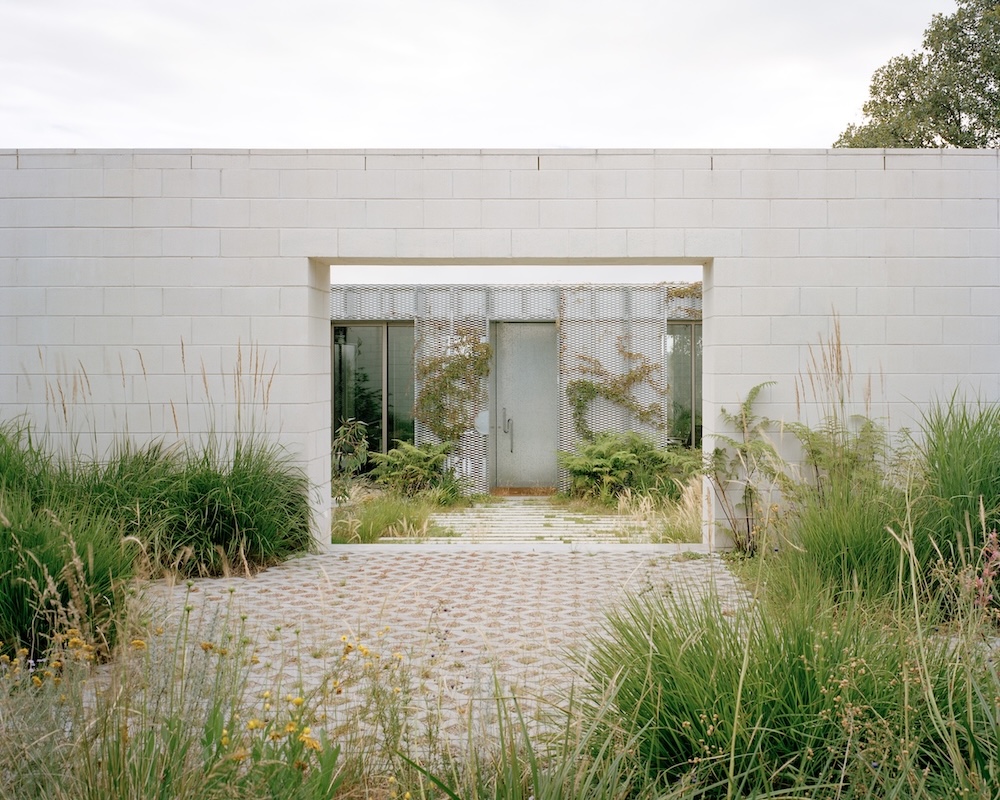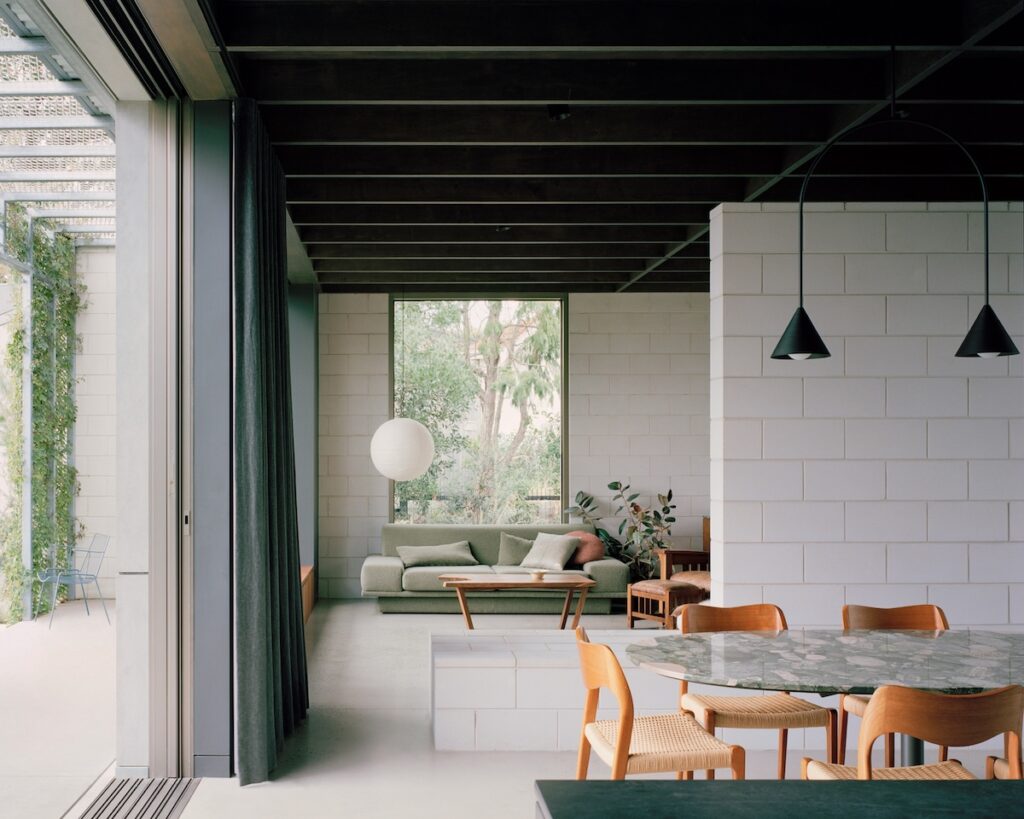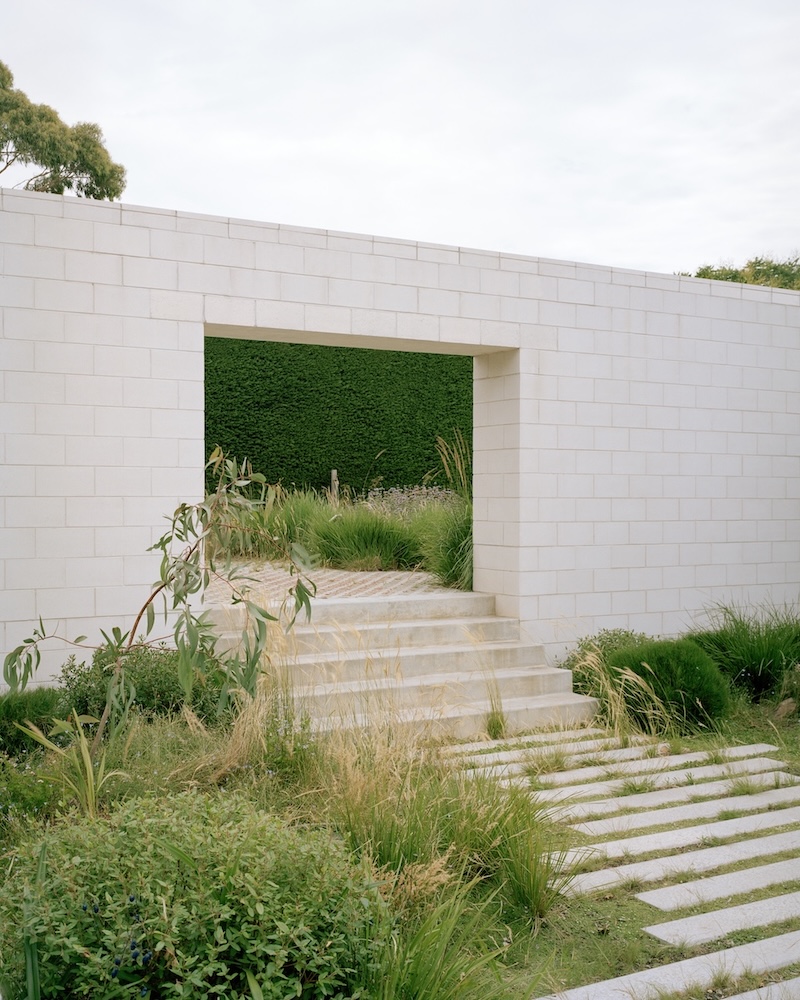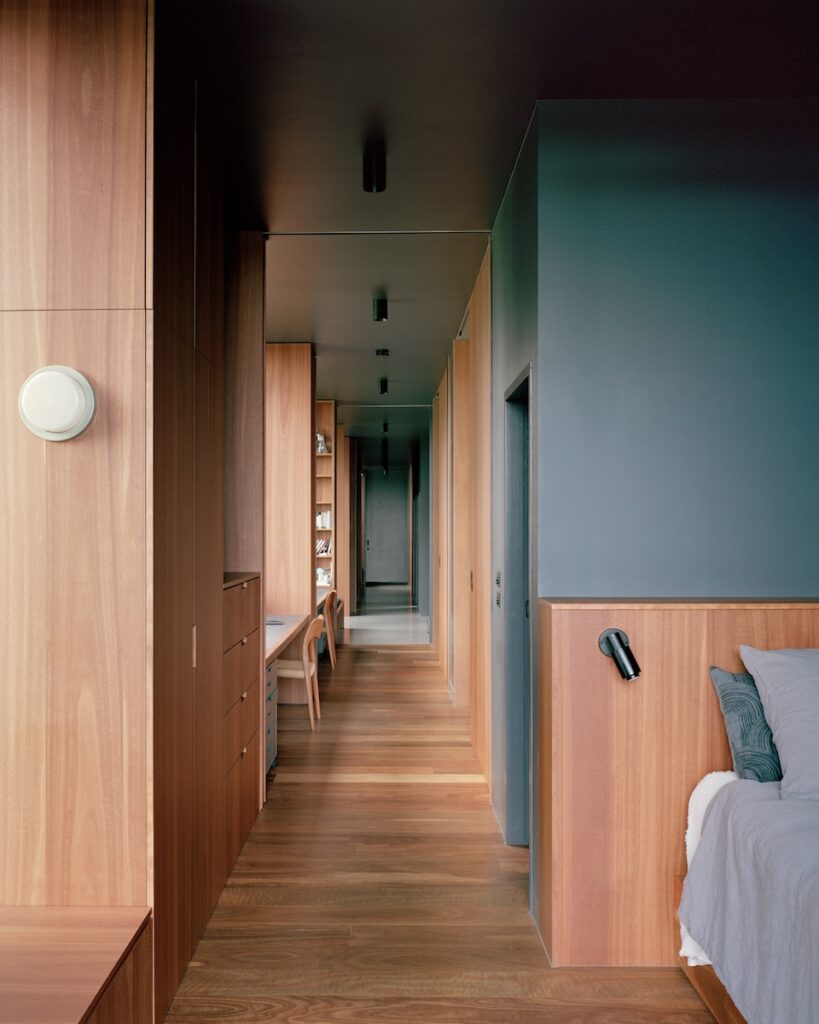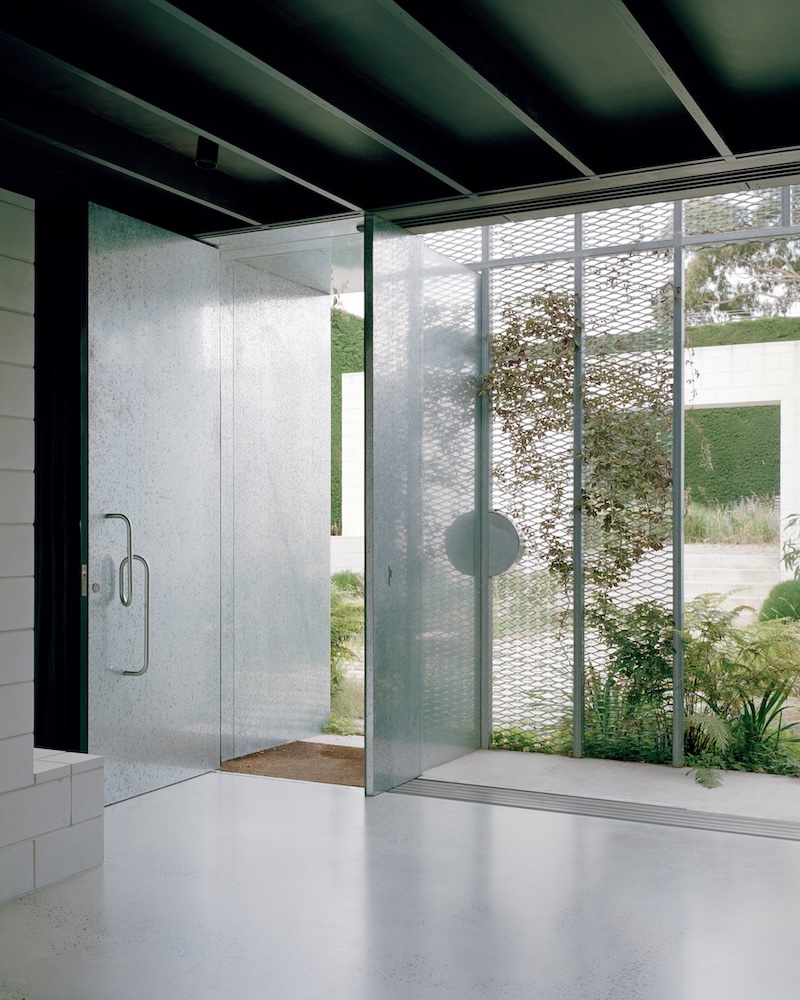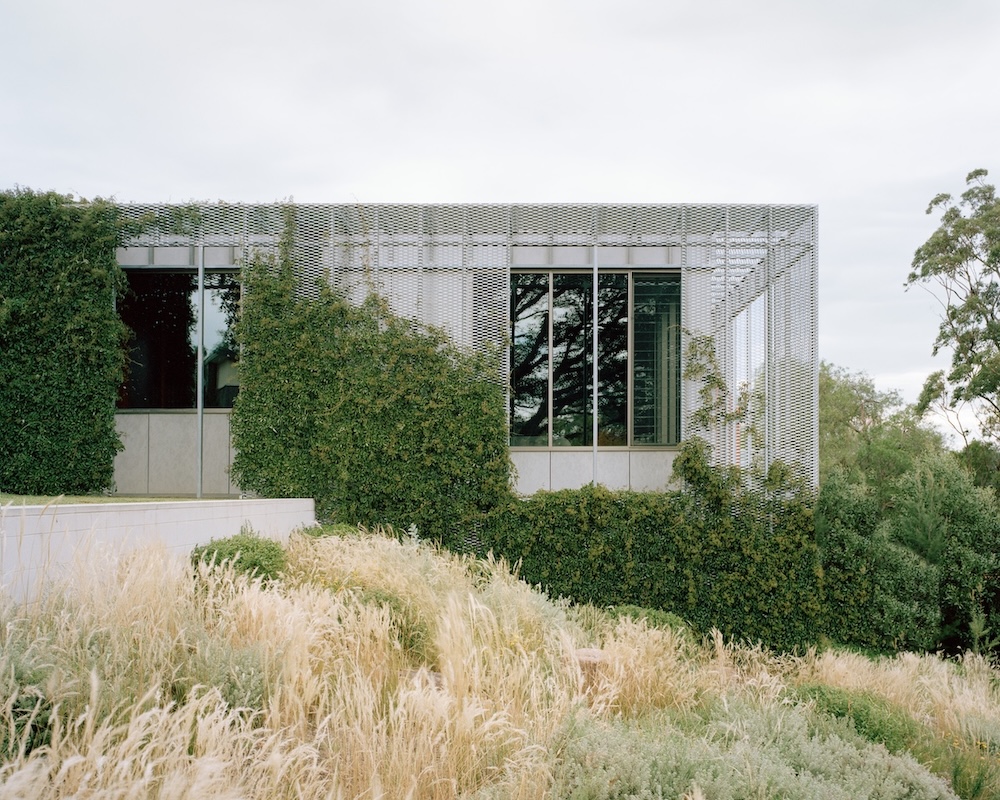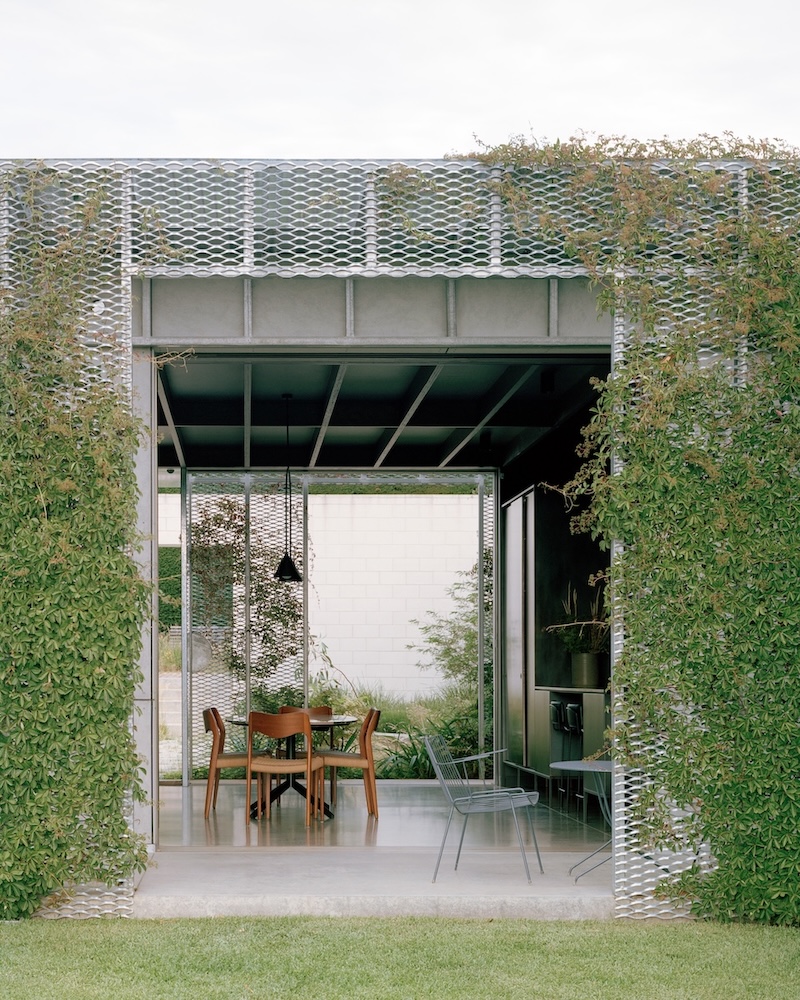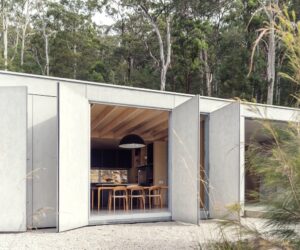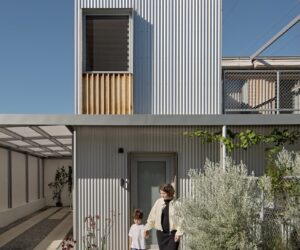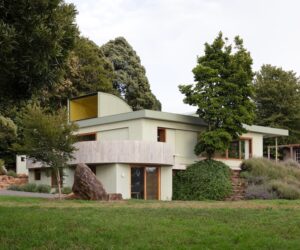Regenerative Wonder–Bush Regeneration Along Melbourne’s Birrarung
With architect and landscape architect, a design-savvy client with a passion for bush regeneration has created something extraordinary along a tributary of Melbourne’s Birrarung.
Some projects surprise and beguile in equal measure and stay with you long after you’ve visited, nesting in your consciousness.
A decade or so back, the outdoorsy clients and their young daughter lucked upon an elevated inner-city block with views across majestic parklands that lend this place a surreal bush-in-the-‘burbs vibe. They tried to make the 1930s owner-built home work, but it turned its back on the majestic expanse to the west that they sought communion with. They joined in the community-led regeneration of the parklands and waterways nearby and, in time, approached Sarah Hicks of Emergent Studios, and Mel Bright and Emily Watson of Studio Bright to collaborate on a robust single-storey home designed in dialogue with a biodiverse habitat garden.
This slow, patient regeneration of bushland habitat is attracting wondrous wildlife including usually shy little fairy wrens, who felt safe enough to raise their fledglings in a sheltered courtyard recently.
The brief prioritised abundance in nature and simplicity in built form. “If I’d had the talent, I’d have been an architect,” the client quips. A lover of modernist and brutalist architecture, she knew simple forms, a modest scale and minimal materials could deliver their needs: a peaceful, low-maintenance, indoor-outdoor home with space for family and friends, and nooks for creative projects the quiet trio like to pursue in proximity to one another and the natural world.
Studio Bright has delivered a spectacularly idiosyncratic courtyard house clad in fibre cement sheet and wrapped in a galvanised metal arbour which will eventually be swallowed whole by Virginia creeper, further helping the home blend into its surroundings.
Unlike the old house, the built form is now sited towards the rear of the block, maximising parkland connection. A long, low wing of compact bedrooms with an active spine of spill-out spaces runs east-to-west along the southern edge, infusing the home with glorious northern light, cross ventilation, habitat views and seasonal experiences. At its perpendicular heart is a kitchen/dining/living space opening to two wildly different courtyards.
The front garden is a stepped, semi-naturalistic grasslands of sorts that cleverly integrates old and new site conditions. Entering the property through an arch in the existing and very formal hedge, it all comes as a magical surprise. The landscape deftly guides visitors down the sloping site and through another formal opening – this time in a monumental masonry wall of creamy blockwork – and into a second intriguing threshold space: the sheltered courtyard where the wrens nested. By the time you reach the creeper-clad house, you’ve acclimatised to constant surprise.
The rear courtyard brings another doozy. The living space opens to what was a formal lawn but is now a haha – another formal landscape device, used in 18th century Europe to conceal topographical shifts while preserving panoramic views. Here, at the edge of the escarpment, the haha functions almost as an outdoor room. It conceals a dramatic drop below and links to a rocky path snaking along the property’s northern boundary and leading down to the parklands beyond.
Sarah credits close collaboration with Mel, Emily and the client as central to the multifaceted project’s success. “We worked in dialogue to establish these spaces,” she says. “Particularly the pathways leading into the entries and the courtyard, which is almost in between architecture and landscape.” The domestic ecology transitions from enclosed at the entrance to open and naturalistic at the rear. “[It is] a complete counterweight to the formality and geometry of the architecture,” Sarah adds. “[It] reintroduces the qualities of the pre-existing landscape. The architectural form of the house really brings into relief all the shapes of the trees and plants. If you’re in the bush you don’t get those clear shapes and silhouettes. The background of the walls make pictures out of the landscape.”
The parkland scale at the rear of the site enables “really significant eucalpytus … at the boundaries, and extensive layered planting, from grassy understorey planting with wildflowers, to layers of lower to higher tall shrubs,” Sarah says. “The clients don’t have pets, so there was a real possibility to bring fauna back into this site. The garden can be a real hotspot for wildlife, given there’s water sources and healthy, tended vegetation.”
Mel, Emily and Sarah share their clients’ joy about the return of nesting fairy wrens – a rarity in the inner city. Sarah hopes impacts like this prompt others to give habitat gardening a go. “What I hope this garden achieves is to inspire other people to consider their own domestic gardens as spaces for regenerating the landscape,” she says. “It might be about habitat value or a really specific target, like pollinators for example. With a bit of engagement and research you can create spaces that will bring you a lot of satisfaction.”
Inside issue 104 — Grab the issue here.
Specs
ARCHITECT
Studio Bright
BUILDER
Built by Guild and Frank (Victoria) Pty Ltd
LANDSCAPE ARCHITECT
Emergent Studios
LOCATION
Wurundjeri Country / Vic
PASSIVE ENERGY DESIGN
Passive sustainable principles guided the project: maximising natural light through careful orientation, minimising the need for mechanical air conditioning and selecting materials for durability and low maintenance. The spatial arrangement focused on spaces that were cross ventilated throughout. The length of the dwelling faces north, with a mesh eave that is a climbing frame for a deciduous creeper to allow winter sun to penetrate deep inside and then to act as protection from the harsh summer sun. The blockwork garden walls and concrete floor slab provide thermal mass. Lightweight timber framed walls are maximised with bulk insulation.
MATERIALS
The project was driven by robust materiality, such as the blockwork walls by Austral Masonry in “Porcelain”. The external façade mesh in expanded galvanised steel is by Truss Forte. Simple Barestone external fibre cement sheet by Cemintel was used as cladding to the lightweight walls. Internal joinery is spotted gum.
FLOORING
Armourfloor’s engineered timber flooring by Big River Group features five layers of Australian eucalypt hardwood sheets finished in Whittle Wax Evolution Hardwax “Matte”.
INSULATION
The floor slab is insulated with R2.7 rigid insulation between topping screed and the structural slab. The timber flooring is framed and insulated with R.4.1 glasswool batts. The same batts in the internal walls reach R2.7, and external walls additionally use foil. The block cavity wall insulation features R1.9 Foilboard “Green 20” and the ceiling insulation is gold high-performance at R6.0, with a roof blanket at R1.3.
